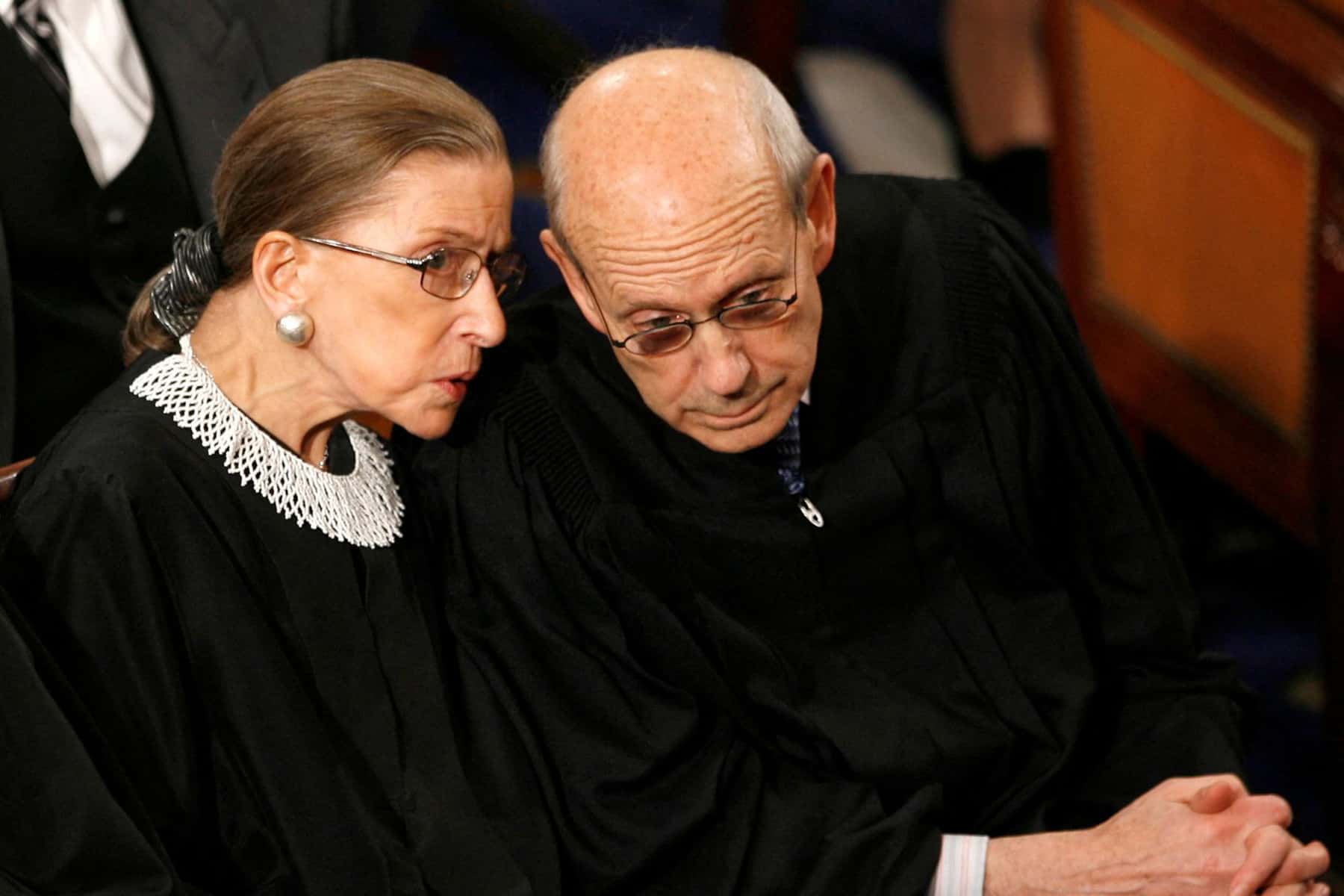
Supreme Court Justice Stephen Breyer announced plans to step down from the court at the end of the term. The 83 years old made the announcement during an appearance with President Joe Biden on January 27.
Breyer took his seat on the court on August 3, 1994. While the recent extremes to which Senate Republicans have gone to dominate the Supreme Court have made the seats seem simply to reflect political parties, in fact Breyer’s history on the court shows how American democracy and, with it, the Supreme Court, have become partisan since the 1980s.
“I am writing to tell you that I have decided to retire from regular active judicial service as an Associate Justice of the Supreme Court of the United States, and to serve under the provisions of 28 U. S. C. § 371(b). I intend this decision to take effect when the Court rises for the summer recess this year (typically late June or early July) assuming that by then my successor has been nominated and confirmed. I enormously appreciate the privilege of serving as part of the federal judicial system – nearly 14 years as a Court of Appeals Judge and nearly 28 years as a Member of the Supreme Court. I have found the work challenging and meaningful. My relations with each of my colleagues have been warm and friendly. Throughout, I have been aware of the great honor of participating as a judge in the effort to maintain our Constitution and the rule of law.” – Stephen Breyer
Breyer has always been adamant that the court must not be political. Instead, he has advanced a strong defense of democracy, arguing that the main achievement of the Constitution was to set up a system that would accommodate the changing needs of the American people. To that end, he is a scholar of administrative law, examining the detailed ways in which our system works.
Democratic President Bill Clinton appointed Breyer to a seat formerly held by Harry Blackmun, who had been appointed by Republican President Richard Nixon. Blackmun was a justice in the days when it made sense for a Republican to support measures that defended civil rights: he was the author of the 1973 Roe v. Wade decision protecting a woman’s right to choose an abortion. So the seat, itself, has been characterized by pragmatism and moderation, rather than political affiliation, since the 1960s.
Clinton appointed Breyer to the court after President Ronald Reagan had set out to change the Supreme Court to reorder the nature of the country. From 1954 until 1987, the prevailing principle of the court was that it must protect civil rights, especially when state legislatures discriminated against certain populations. Using the Fourteenth Amendment’s declaration that all Americans should enjoy equal protection under the law and receive due process of the law before losing any rights, the Supreme Court stepped in to try to make sure that all Americans were treated equally before the law.
Americans who resented the court’s protection of equal rights insisted that the justices protecting civil rights were “legislating from the bench,” or were exercising “judicial activism” by changing laws that the people’s elected representatives had enacted. They insisted that the court must return to enforcing the letter of the law, simply interpreting what the Framers had written in the Constitution, as they had written it.
That view of the Constitution would erase the expansion of civil rights – desegregation, interracial marriage, and access to birth control, that the post–World War II Supreme Court had enshrined into law. Those who embraced this literal version of the Constitution called themselves “originalists” or “textualists,” and their intellectual representative was Justice Antonin Scalia, appointed to the Supreme Court in 1986 by Republican President Ronald Reagan.
Breyer is an intellectual counterpoint to Scalia. In a book Breyer wrote in 2005, he took on originalism with his own interpretation of the Constitution called “Active Liberty.” Breyer explained that we should approach constitutional questions by starting at the beginning: what did the Framers intend for the Constitution to do? Their central goal was not simply to protect liberties like free speech or gun ownership, he argued; their goal was to promote democracy. All court decisions, he said, should take into consideration what conclusion would best promote democracy.
The conviction that the point of the Constitution was to promote democracy meant that Breyer thought that the law should change based on what voters wanted, so long as the majority did not abuse the minority. Every decision was complicated, he told an audience in 2005 — if the outcome were obvious, the Supreme Court wouldn’t take the case. But at the end of the day, justices should throw their weight behind whichever decision was more likely to promote democracy.
That idea honored the changing necessities of the modern world and thus stood against the originalists. Although that vision was not always aligned with the Democratic Party, it was firmly rooted in the idea that the point of the Constitution was to anchor a nation in the voice of its people.
Now, of course, thanks to the three justices former president Donald Trump added to the Supreme Court, originalists have a strong majority of six of the nine seats on the court. Biden will undoubtedly try to counter those originalists with a justice who embraces a vision more like Breyer’s, but it would be a mistake to see this as a question of partisanship so much as a question of what, exactly, the American government should look like.
Should the federal government be able to protect equality before the law, or should state legislatures be able to do as they wish? In the last year, the right-wing majority on the Court has allowed the state of Texas to undermine the constitutional rights of women, established by Blackmun’s decision in Roe v. Wade, and has indicated it will challenge the ability of Congress to delegate power to regulatory agencies in the executive branch, thus hamstringing the modern government. Breyer’s successor will, almost certainly, stand against such “originalism.”
Already, Republican voices are opposing the idea of Biden appointing a Supreme Court justice. During his campaign, Biden vowed he would appoint a Black woman to a position on the Supreme Court, and White House press secretary Jen Psaki previously said he would keep that promise.
“I’ve made no decision except the one person I will nominate will e someone with extraordinary qualifications, character, experience and integrity. And that person will be the first Black woman ever nominated to the United States Supreme Court. It’s long overdue.” – President Joe Biden
There are a number of truly exceptional candidates for the post. Nonetheless, Fox News Channel personality Sean Hannity called Biden’s promise “unconstitutional discrimination.”
And yet, University of Texas law professor Stephen Vladeck noted that representation on the Supreme Court has been wildly skewed. Of the 115 Supreme Court justices we have had in our history, we have had 108 white men, 2 Black men, and 5 women – 4 white and 1 Latina.
Breyer has pointed out that there is almost always a tension in our laws. In this case, should we adhere to the ideal that the law should be race and gender blind, or should we work to remedy past wrongs? This seems an excellent example of where the principles of “Active Liberty” are useful: addressing the obvious skewing of representation on the Supreme Court seems like a good way to promote democracy.
Mаnuеl Bаlcе Cеnеtа
Letters from an Аmerican is a daily email newsletter written by Heather Cox Richardson, about the history behind today’s politics















